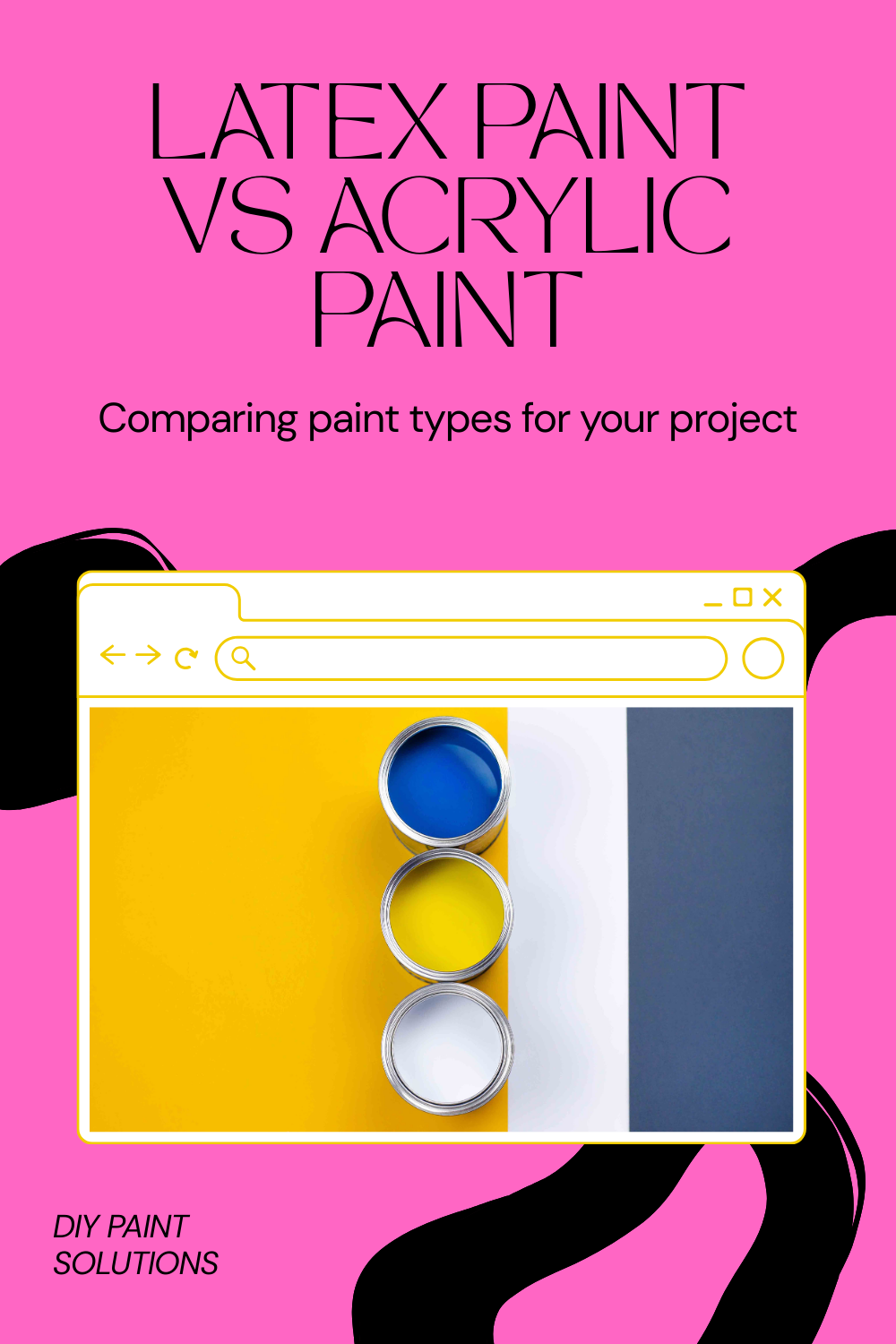Ever stood in a paint aisle, paralyzed by choice, wondering why the same can size of paint is labeled “acrylic” on one and “latex” on the other? You’re not alone. When I first dove into DIY upcycling, I thought paint was paint. Turns out, that assumption cost me time, money, and more than a few cracked finishes.
If you’re staring down your next creative project—be it a vintage chair makeover or a mural-worthy canvas—you’ll want to know which paint truly fits your purpose.
In this guide, I’m breaking down the difference between acrylic and latex paints in a way that’s totally beginner-friendly but still deep enough for seasoned upcyclers. You’ll get:
- Real-world comparisons,
- Step-by-step usage tips,
- And a few honest lessons I learned the hard way.
Let’s brush into it
What’s the Key Difference Between Acrylic and Latex Paint?
Short answer: It’s all about the binder and flexibility.
- Acrylic paint uses an acrylic resin binder, making it highly elastic, water-resistant, and durable over time.
- Latex paint, despite the name, contains no rubber. It uses a synthetic polymer (often vinyl) as a binder and is generally more beginner-friendly and budget-friendly.
In Plain Speak:
- Acrylic = Tougher, better for high-wear or outdoor stuff.
- Latex = Easier, better for walls and low-wear surfaces indoors.
Performance Showdown: Which Paint Wins Where?
Here’s where things get juicy. Let’s compare them side by side with real-life context:
| Feature | Acrylic Paint | Latex Paint |
| Dry Time | Quick-drying (often under 30 min) | Dries in 1–2 hours |
| Durability | Highly flexible, less likely to crack | Can chip in high-moisture areas |
| Ease of Use | Can be tricky due to fast dry time | Smooth to roll and clean up |
| Best For | Outdoor furniture, art, surfaces that flex | Interior walls, ceilings, crafts |
Example: I used acrylic on a rattan chair that sits outside in my courtyard. Three rainy seasons later—zero peeling. But on a bookshelf, I painted with latex? Peeling at the corners within six months (lesson learned).
How to Choose the Right Paint for Your Project
Let’s simplify this with a quick checklist. Consider these 4 questions:
- Is your project indoor or outdoor?
- Outdoor? Go acrylic.
- Indoor? Latex is fine.
- Is the surface flexible or textured (e.g., fabric, rattan, plastic)?
- Flexible = Acrylic wins.
- Flat and rigid = Latex works well.
- Do you need bold color saturation or fade resistance?
- Acrylic delivers vibrant, fade-proof color over time.
- Are you layering or blending like in artwork?
- Acrylic’s fast-drying time makes it ideal for layering.
Pro Tip:
If you’re painting something that moves a lot (like canvas sneakers or fabric wall art), acrylic paint + a fabric medium = unbeatable combo.
Step-by-Step: Prepping and Painting With Each
Here’s a breakdown of how to work with each paint type effectively:
Using Acrylic Paint
- Prep your surface – Lightly sand it and clean it well.
- Prime if needed – For wood or slick surfaces, a primer boosts adhesion.
- Apply in thin layers – Acrylic dries fast; don’t go too thick.
- Seal it – Use a polyurethane or acrylic sealer for long-term protection.
My go-to move: I use Mod Podge as a quick-drying sealer for smaller items—it gives a smooth, glassy finish.
Using Latex Paint
- Clean the surface – A damp cloth usually does the trick.
- Tape your edges – Latex can drip if you’re not careful.
- Use the right tools – A foam roller makes for buttery-smooth coverage on walls or wood.
- Apply 2–3 coats – Let each coat dry completely.
Pro insight: I once painted a wooden desk with latex and used a foam brush instead of a roller—big mistake. The brush streaks were unforgiving.
Let’s Talk Sustainability and Budget
You know I’m all about reusing and upcycling. Here’s how each type stacks up:
- Latex paint is more eco-friendly thanks to its lower VOCs (volatile organic compounds) and easy cleanup with just soap and water.
- Acrylic paint—especially in tubes—tends to create more waste unless you use every drop or buy larger containers.
Upcycle Tip: I always reuse old glass jars or baby food containers for mixing leftover paints. Great for custom shades without buying more.
Final Verdict: Which Paint Should You Buy?
Both paints serve a purpose—you just need to match them with your project’s vibe.
- If you want bright color, longevity, and versatility on weird surfaces? Acrylic’s your bestie.
- If you’re doing big wall projects or furniture indoors and want ease + affordability? Latex is the way to go.
And hey—no shame in mixing and matching! I often use latex as a base coat and detail with acrylic. It’s a blend that gives you the best of both worlds.
Wrapping It Up
Acrylic and latex paints each have their quirks, strengths, and ideal scenarios. Knowing when and where to use each is what separates the average DIY-er from the confident creative.
Paint is your medium. Your project is your story. Make it pop.
Got questions? Tried mixing the two? Drop your experiences or pro tips in the contact us—I’d love to hear how your projects turned out!


